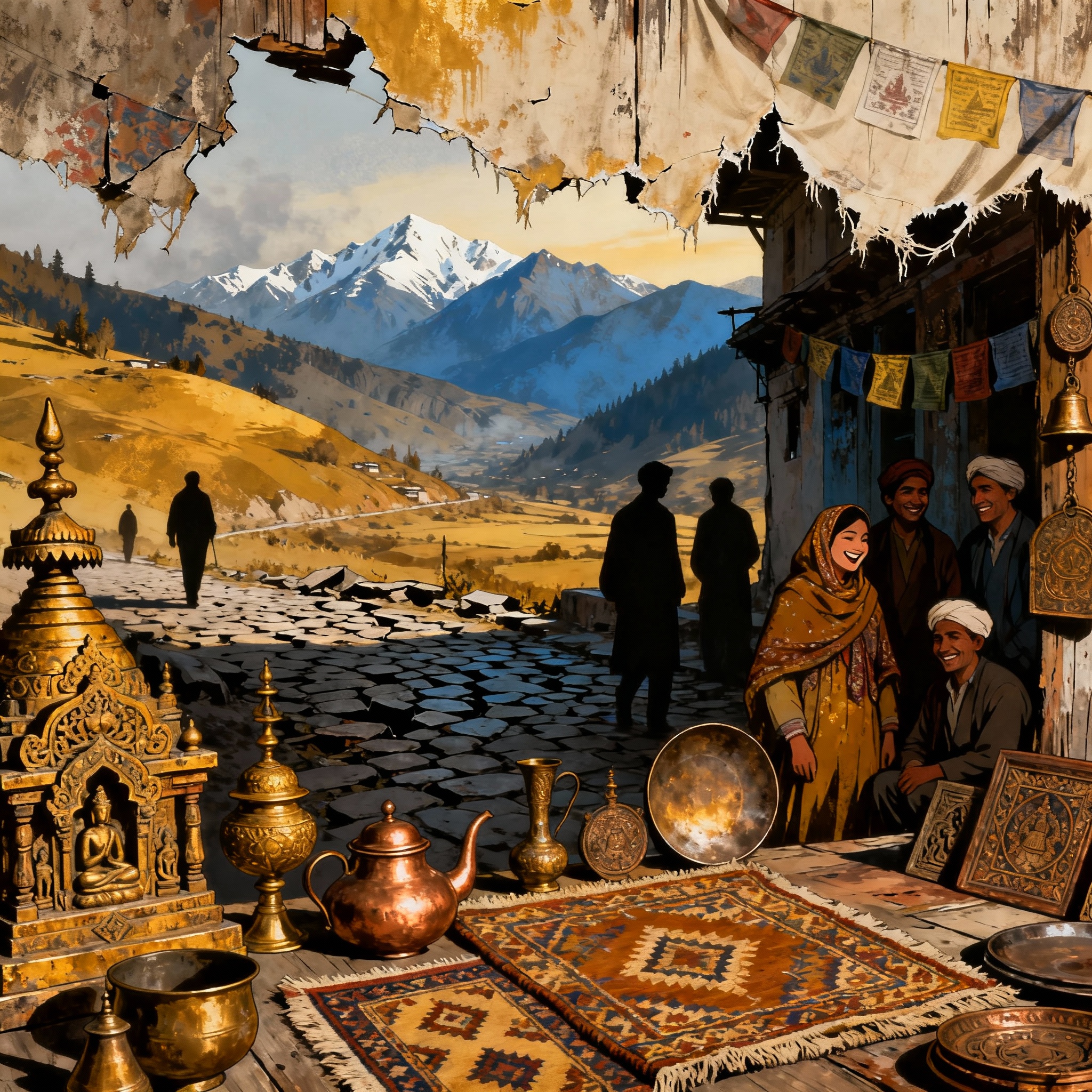By Rayees Ahmad Kumar
Kashmir, long celebrated as the “paradise on Earth,” has never been known only for its snow-capped mountains, sparkling rivers, and majestic landscapes. Its deeper beauty lies in a rich spiritual heritage shaped by saints and sages who traveled from faraway lands like Simnan, Hamadan, and Baghdad. These revered figures left their homelands centuries ago, drawn by a divine mission to spread the message of love, brotherhood, and faith in the Valley.
Among them, Mir Syed Ali Hamdani stands out as a towering figure, remembered not only for his spiritual guidance but also for bringing with him a caravan of artisans whose skills transformed Kashmir’s economy. Carpets, shawls, papier-mâché, woodwork, and embroidery—all the crafts that today define Kashmiri identity—owe much to this cultural infusion. The legacy is alive even now: just a day ago, Srinagar was formally recognized by the World Craft Council as a “World Craft City,” a global acknowledgment of the region’s enduring artistic excellence. The honor, though contemporary, is rooted in centuries-old traditions that saints and craftsmen introduced, nurtured, and preserved.
For generations, Kashmiris prided themselves on hospitality, honesty, and a crime-free society. Sir Walter Lawrence, the British settlement commissioner who wrote the celebrated book The Valley of Kashmir in the late 19th century, marveled at the people’s integrity. He described the Valley as a place where crime was almost nonexistent and where moral character defined daily life. This testimony was not just colonial admiration but a reflection of lived reality—Kashmir was a land where trust and decency were not exceptions but norms.

Yet, fast forward to the present, the picture is less reassuring. The Valley, like much of the world, has witnessed profound changes in its social fabric. A disturbing moral decline has crept into daily life. Cases that were once unthinkable are now reported with alarming frequency. A son consigning his parents to an old-age home, a brother murdering his sibling over property disputes, or sisters being denied their rightful inheritance—these are no longer isolated tales whispered in shock, but regular headlines that jar the conscience.
What is perhaps most unsettling is the erosion of values within the family, the very unit once regarded as sacred. Stories of mothers abandoning or even killing their newborns, or minor girls facing unspeakable abuses, stand in sharp contrast to the Valley’s spiritual inheritance. Recent incidents—like the gangrape of a minor on the auspicious occasion of Eid and the killing of an eight-day-old infant by her own mother—have shaken public faith in the moral compass of society. The proliferation of such reports on social media is not only distressing but also indicative of a deeper malaise: a community struggling to reconcile its celebrated past with a troubling present.
This decline has not gone unnoticed by thinkers and writers. Allama Iqbal, the philosopher-poet who regarded Kashmiri youth as the torchbearers of a bright future, had envisioned a generation guided by courage, virtue, and intellect. Instead, what we often witness are young men and women adrift—drawn to fleeting distractions, vulnerable to moral lapses, and at times complicit in crimes that corrode the social order.
Crime statistics underscore this change. While the Kashmir of Lawrence’s time could be romanticized as “crime-free,” the 21st century Valley is grappling with a visible surge. From domestic violence and sexual assault to property disputes and cybercrime, the police and judiciary are under mounting pressure. Reports of drug abuse among Kashmiri youth have further compounded fears of a society losing its moral and spiritual bearings.
But while it is tempting to paint this picture in stark black and white, the truth is more complex. Modern Kashmiris are also grappling with the strains of conflict, unemployment, urbanization, and the pressures of globalized culture. Social scientists argue that the weakening of traditional value systems is not unique to Kashmir; it reflects broader transitions seen worldwide. Yet, given the Valley’s spiritual legacy, the contrast appears more painful.
The question then arises: how can Kashmir rediscover its moral compass? Stronger laws and strict enforcement are often cited as immediate remedies. Crimes of heinous nature demand exemplary punishment to deter others. The justice system must be swift and uncompromising in cases that outrage collective conscience. But laws alone cannot rebuild the moral edifice of a society.
The Valley needs to revive the teachings of its saints—not just in sermons but in everyday life. The principles of compassion, brotherhood, respect for women, and care for the vulnerable must move beyond rhetoric and into practice. Schools, religious institutions, and community organizations have a role to play in moral education. Families must once again become the cradle of values, where children learn not only literacy but also empathy, tolerance, and responsibility.

Kashmir has always been more than its breathtaking landscapes; it has been a moral and cultural beacon. The recent recognition of Srinagar as a World Craft City is a reminder that its legacy is still alive, still relevant. The challenge now is to ensure that the Valley’s moral fabric is restored with the same dedication with which its artisans weave their intricate carpets—thread by thread, patient yet resilient.
The saints who once walked these mountains dreamed of a Kashmir built on faith, integrity, and fraternity. If today’s generation can rediscover that vision, the Valley may yet reclaim not only its title as paradise on Earth but also its place as a sanctuary of humanity’s finest virtues.
The views expressed in this article are solely those of the author and do not necessarily reflect the opinions or views of this newspaper
